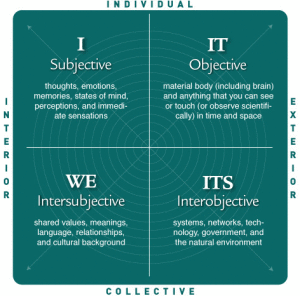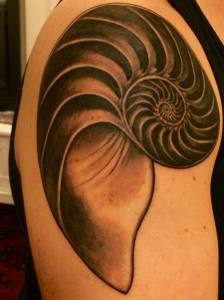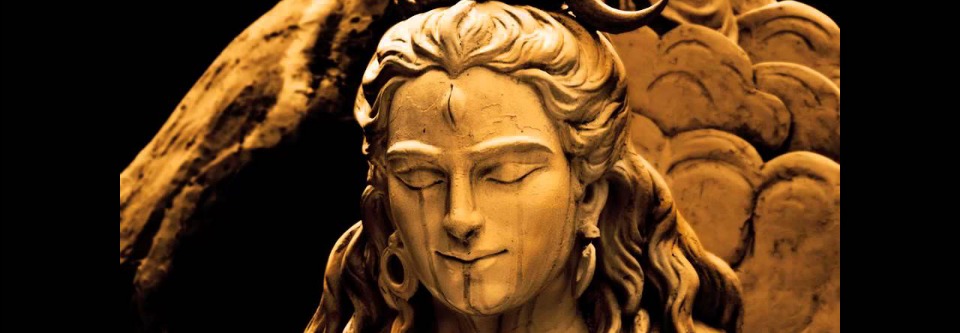The Law of Attraction for Socialists: Part II
I’ve worked with a number of clients with a sincere struggle around the question of manifestation and money. They want to be successful but also struggle with the questions of mass poverty in the world. They look to manifestation teachings which essentially argue in one form or another that systemic injustice is a consequence of poverty consciousness, either that of the poor themselves or of the rich (usually the former admittedly). And this answer doesn’t really satisfy them. Yet somehow they sense some intelligence or wisdom inherent in the manifestation teachings, not necessarily related to this specific point but to other aspects of the overall teaching. Hence the confusion.
So my first reply is that we need to separate out the process (or practice) of manifestation teachings from the wider context and framework within which these practices are taught. I described some of the flaws of that framework, most especially the blindness to its own contextual nature in Part I.
I believe many, if not most, of the processes and practices at the heart of manifestation teachings could be retained if they were put within a different political, social, economic, cultural, and ecological framework.
Just so my own cards are on the table, I’ll say I’m personally of the view that capitalism and the classic liberal-democratic social order which undergird it, are in significant breakdown globally. That’s far from an entirely positive thing in my view–quite the opposite in fact. I’m not gleeful at this prospect but nevertheless I agree with analyses that point to inherent contradictions at the heart of capitalism and even liberal-democracy itself. I think those inherent contradictions and flaws are revealing themselves on a global scale.
For the purposes of this article, the reason I mention that is because manifestation teachings are entirely sourced in a capitalist economics/liberal-democratic value systems. Since I think that system is increasingly at war with the flourishing of life itself, then manifestation teachings (as they are currently contextualized) are part of the problem for me.*
In other words, manifestation teachings–in their current form–have no solution to the problems humanity faces. What they can do, in a very small percentage of people, is help individuals acquire greater material prosperity. But that’s not a strategy for solving poverty given that the primary way one can become rich (under our current economic realities) is by the immiseration of others.
What I want to explore here then is the possibility that elements of manifestation teachings however could be a part of the solution (or at least part of a solution, as I believe there are many possible solutions). What I half-jokingly/half-seriously am calling The Law of Attraction for Socialists.
In other words, seeing if we can separate out the valid insights and practices of manifestation teachings and place them within a more liberation-minded frame of reference.
To use some philosophical jargon for a second, I think most manifestation teachings make the error of confusing is for ought. Just because capitalism is the way of the world does not mean that’s how it should be. (Just ask The Pope).
So….
If we retain a capitalist currency framework, then we need to install a whole series of realities to create for a more equitable and just distribution of goods (material goods, social goods, etc.).
Things like:
- A Guaranteed Basic Income
- A much higher rate of taxation on wealth (particularly as gained through financial investments) concomitant with major public investments in social goods like education, health care, and the like.
- Creating a legal framework that acknowledges the public ownership of the commons (e.g. the air, the water, etc.) and charging rents on private interests that use the public commons property.
- A separation of the media and the political process from the corrupting influence of major financial investments.
- A series of strictly enforced legal measures meant to protect the environment and promote (even force) technologies that are beneficial to all forms of life and degrade the power of technologies and energy sources opposed to the flourishing of life.
- A recognition of the historical wrongs done to many groupings of people and the ways in which those historical wrongs have been inscribed into the current reality, along with steps taken to adjudicate that present reality (sourced in historical wrong).
I can’t say I’m super optimistic that is happening anytime soon to put it very mildly.
The other option would be a more revolutionary one, like the one envisioned by Eileen Workman in her book Sacred Economics. Workman describes a society not based on money (i.e. debt). Instead she lays out a clear vision of a society built around credits (interestingly derived in its root meaning from the word belief, credo).** That it an economic system that would be predicated upon and cultivate trust as an actual currency. In contrast to neoliberal capitalism which bases itself on the mistaken belief that individuals working in mind of their own supposed self-interest ends up (magically) encouraging the good of the whole. This view creates mutual distrust throughout society (i.e. the prisoner’s dilemma of game theory). Workman envisions more worker-controlled forms of commerce, reversing the power of finance over labor (her name after all is Workman).
Let’s for the moment imagine (as best we can) one or both of those two options being a reality. Very hard to imagine but let’s try. Neither would be anything approaching a completely perfect society of course. They would simply be ones far more aligned to the truth of existence. They would be substantially better than what currently is the case.
Imagine then a society and culture formed this way. The key element to hold in mind here is that your artistry or profession is not tied to your ability to actually eat, have a roof over your head, or clothes on your back. Your gifting, your offering of goodness in the world is not inherently tied to the anxiety and panic of survival. (This energy underlies the experience of many artists and entrepreneurs, not to mention many others).
At this point commerce, exchange, artistry, production could actually be truly free. We might say that would be an actually free market, i.e. free of the endemic injustice of the current reality.
Then manifestation teachings could actually be put to use within a just social reality. The reason manifestation teachings currently talk so much about monetary or financial freedom is because our current reality is very oppressive. I mean what’s the opposite of freedom if not slavery?
Manifestation teachings do have a great deal of wisdom within them. It’s too bad that this wisdom is either too closely aligned with the problematic nature of capitalism or rejected altogether (because of it’s naivety around historical, economic, and political power relationships).
But for the moment let’s acknowledge the wisdoms present in these teachings. Here’s some simple but powerful examples (shared with me by a friend of mine).
People often think of manifestation teachings as picturing some future state that person desires, e.g. more money, a better relationship, more meaningful work, etc., and then meditating on how to get that. It’s also possible however to wake up each day and ask Life, The Universe, God (however you call it) to send you a revelation for that day. Ask for something from life to teach you, something to reveal, in ways large or small, a glimpse of the spiritual world become real in this world. What the ancients called a wonder (the original meaning of a miracle).
Wake up each day and ask for two wonders that day. Then keep your eyes and ears peeled.
Or consider this one (adapted from Robert Moss). Upon waking ask Life to send you a question that day. As you are going through your day–reading, talking and interacting with people, scrolling through your FB profile, listening to the news, whatever–when you encounter a question posed to you (as a reader, conversation partner, citizen, or consumer) consider it being asked by Life itself.
Spend that day wrestling with that question.
These kinds of practices play with the dream-like nature of reality. You begin to become a conscious participant in the psychic nature of life itself. Animals, dreams, babies, social media, images on tv & movies, the land, the waters, ideas, people you interact with, all become part of a subtle array of energies and forces, dramatically and creatively at work.
And this same magic can be directed specifically to one’s gifting or vocation. The 101 version of manifestation teachings typically has the individual impose upon life the vision he or she wants and then use these techniques to attract the energy necessary to complete it. For example in mega-popular book The Secret the Universe is depicted as a genie in a lamp who simply says, “Your wish is my command.” In other words, The Universe is enslaved to our human desires in such a view. The manifestation practices are a technique for controlling the magic of Life to serve our own individual ends which of course almost always become an (un)conscious replication of cultural dreams.
But if we come to a more mature relationship to manifestation we should hold a different view. Rather than a genie in a lamp manifesting my wishes, why not imagine the Universe’s magical play as something more like a spirit guide? Like Virgil or Beatrice leading Dante through realms of hell and paradise, we could play with the magical manifesting forces of life. Those forces would be tutoring and guiding us and yet we would still free to make our own decisions in the process. The autonomy and dignity of the Manifesting Energies would be appreciated and honored (just as Virgil and Beatrice are not slaves to Dante’s wishes to journey in the Divine Comedy). They would direct us as much as we would direct them. There would be mutuality, communion.
Which brings us back to the issue of a social order. If we lived in a just economic and social order, then we could approach these manifestation teachings from a healed place. We wouldn’t be using them as a way to get out of our woundedness or to escape from the inevitable pains and sorrow of living under capitalism.
This manifesting way would be true both in its more general sense of wonderment as well as the more specific sense of harnessing the magical forces to (co)create something as a gift in life.
All of the magic of learning to play with the psychic nature of Life would still be there. Those practices and that way of being however wouldn’t be so tightly funnelled through a world built around debt, constant insecurity (for many) and constant debilitating stress (for many more). It would fundamentally about play and true service.
Until then (as I do in my own work) all of us doing this kind of work either need to ignore the real complexities and ethical ambiguities of charging or we each find our own particular ethic. That usually means some combination of various responses to the economic reality (e.g. here are mine).
If we lived in a truly just and wise reality then we wouldn’t have to do such half-measures.
Nothing stops us now from incorporating these kinds of manifestation practices either in the more general or the more specific sense. But having considered these perspectives, I don’t think it would be possible to go back to some utterly naive or pre-critical view around them either.
—
* Given the philosophical limitations laid out in Part I, the best manifestation teachings can do is amelioration. They can lead people to have greater resources so they can give more to charity, aid foundations and the like. That’s difficult however insofar as the belief of the teachings of themselves is that everyone should follow and manifest their true heart’s desire. They are best then treating wounded people on a battlefield and sending them back into the battle rather than seeking to end the war altogether.
** In Biblical terms, debt is an expression of sin. For the record, The Bible’s vision of a perfect world is not one where everyone has the perfect life they all individually desire but one in which there is no debt or hunger. Abundance in the true meaning of the term.






